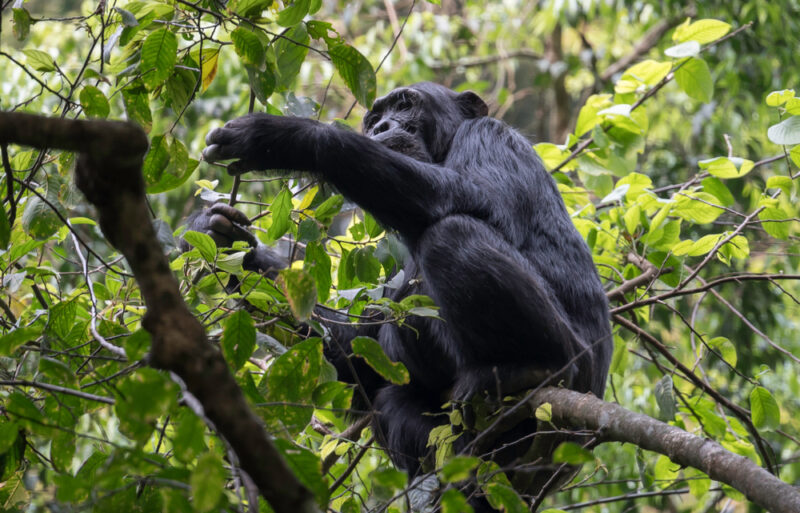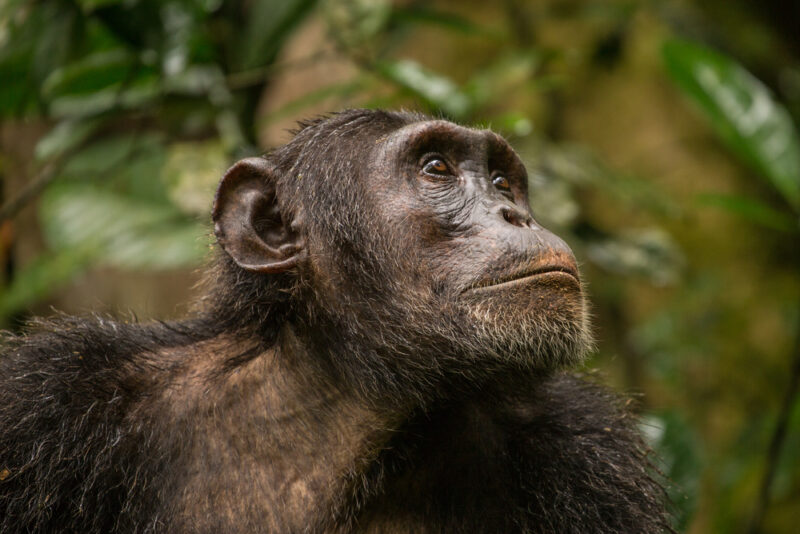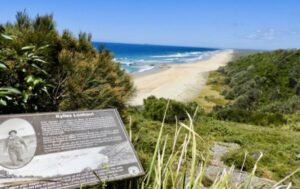Some primates have learned to use rudimentary medicine. In May, researchers observed orangutans chewing up medicinal leaves and then applying the juice to wounds on their skin. Now, a team in Uganda has observed chimpanzees using 13 different therapeutic plants to self-medicate.
Following sick chimps
The team of researchers observed two groups of chimpanzees in Uganda, looking for sick or injured individuals.
Of 170 chimps within the groups, 51 suffered from diarrhea, parasites, or wounds. The team began following the sick apes for 10 hours per day. The sick primates often appeared to be searching for a specific plant to eat. These plants were not part of their usual diet, such as tree bark or the skin of a certain fruit.
The researchers then took samples from the plants to test their healing properties. The vast majority of them were antibacterial.
“We were looking for these behavioral clues that the plants might be medicinal,” Elodie Freymann, lead author of the study, told the BBC.
In total, they collected 17 samples from 13 plant species. Ninety percent of them stopped bacterial growth, and a third also acted as an anti-inflammatory.

A chimpanzee in the Budongo Forest. Photo: Shutterstock
Speedy recovery
Incredibly, the chimpanzees could select the plant that would help their specific injury or illness. All the ill chimps made speedy recoveries.
The team admitted they couldn’t prove the plants they ate caused the recoveries, but the study makes a compelling argument about these chimpanzee’s ability to speed up their healing process. Many of the plants the sick chimps chose to eat hold very little nutritional value, and no healthy chimpanzees were eating them.
Some interesting examples include a male chimp with a hurt hand that he could not use. While other chimps were eating, this chimp searched for a specific fern that the rest of the group did not consume. A few days later, the chimp’s hand was fine again.
Another chimp suffered from diarrhea and tapeworms. With two companions, it left its group and searched for an Alstonia boonei tree. The chimp chewed on dead bark from the tree and swiftly recovered.
Inter-species learning
A huge takeaway from this study is how much we can learn from the medicinal knowledge of other species.
“Chimpanzees are incredibly smart, and it makes perfect sense they would have figured out which plants can help them when ill or injured,” Freymann told the Washington Post.
Plants are important in creating new drugs, but finding medicinal plants is incredibly difficult. The research team’s study proves how crucial it is that we “prioritize the preservation of our wild forest pharmacies, as well as our primate cousins who inhabit them.”






